In the Previous Articles, we talked about Matter from several aspects. Today, let’s start with a foundational concept of Matter: IP-based .
Matter defines a common application layer, using Internet Protocol (IP) , that delivers interoperability among devices regardless of the underlying network protocol. At launch, Matter will run on Ethernet, Wi-Fi and Thread.
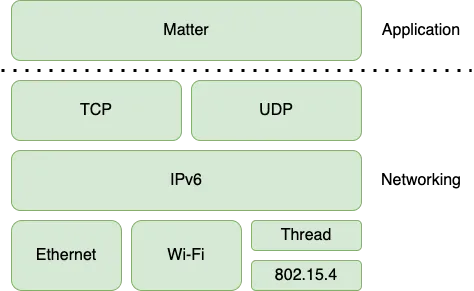
Ethernet and Wi-Fi are all well known networking protocols, while Thread may be new to some people.
In a nutshell, Thread is an IPv6-based , low-power, mesh networking protocol for Internet of things (IoT) products. It is built on IEEE-802.15.4 technology, so the Thread devices cannot communicate with the Wi-Fi or Ethernet devices directly. In the Matter topology, a special device is required to connect the sub-networks, the device is called the Thread Border Router (Thread BR will be used for short).
Below is a typical Matter topology:
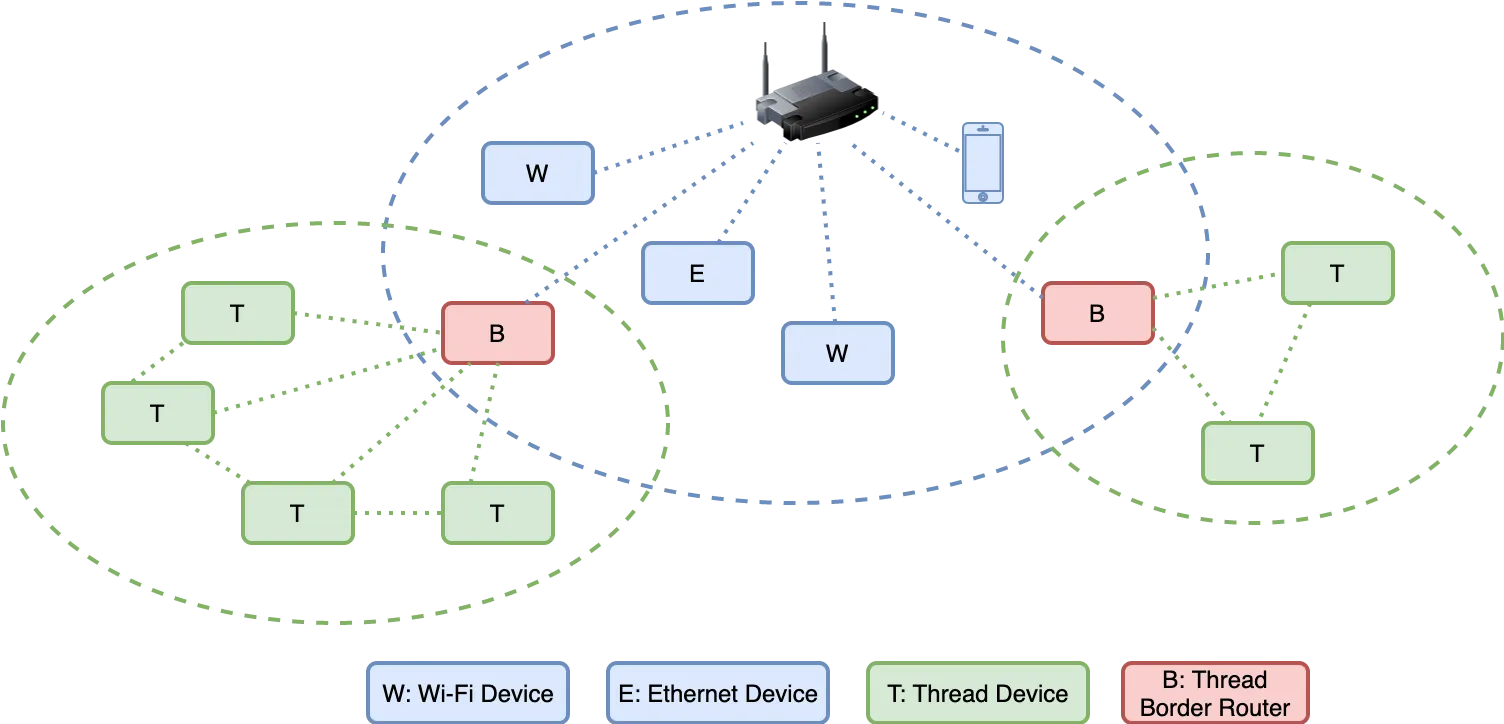
The Device-to-Device Automations within local network is a key feature of Matter, it works across Ethernet, Wi-Fi and Thread devices. For instance, a Thread Matter switch can directly control a Wi-Fi Matter bulb, or the other way around, without any phone-apps/cloud in the middle.
Now, let’s take a look at the Thread BR that connects Wi-Fi and Thread as an example, and investigate how it supports the (a) bi-directional connectivity and (b) service discovery used in Matter.
Bidirectional Connectivity
Thread BR is responsible for forwarding IP frames between Wi-Fi and Thread networks. Different from the Gateway/Bridge devices which need to handle the application-level interaction, Thread BR only focuses on the IP layer routing, regardless of the application payload.
There are three scopes in a Thread network for unicast addressing:
- Link-Local: used only for one-hop communication
- Mesh-Local: used for communication within the local Thread Network
- Global: used for communication with the hosts outside the local Thread Network
Thread BR configures its Thread partition with an Off-Mesh Routable (OMR) prefix, each Thread device adds an OMR address as the Global unicast address. Thread BR announces reachability of this OMR Prefix to Wi-Fi network by sending Router Advertisement (RA) which contains an IPv6 Route Information Option (RIO).
Vice versa, Thread BR should also inform Thread devices about the routing to Wi-Fi network. Rather than using the IPv6 Neighbor Discovery protocol, prefixes are advertised via Thread Network Data as external route entries.
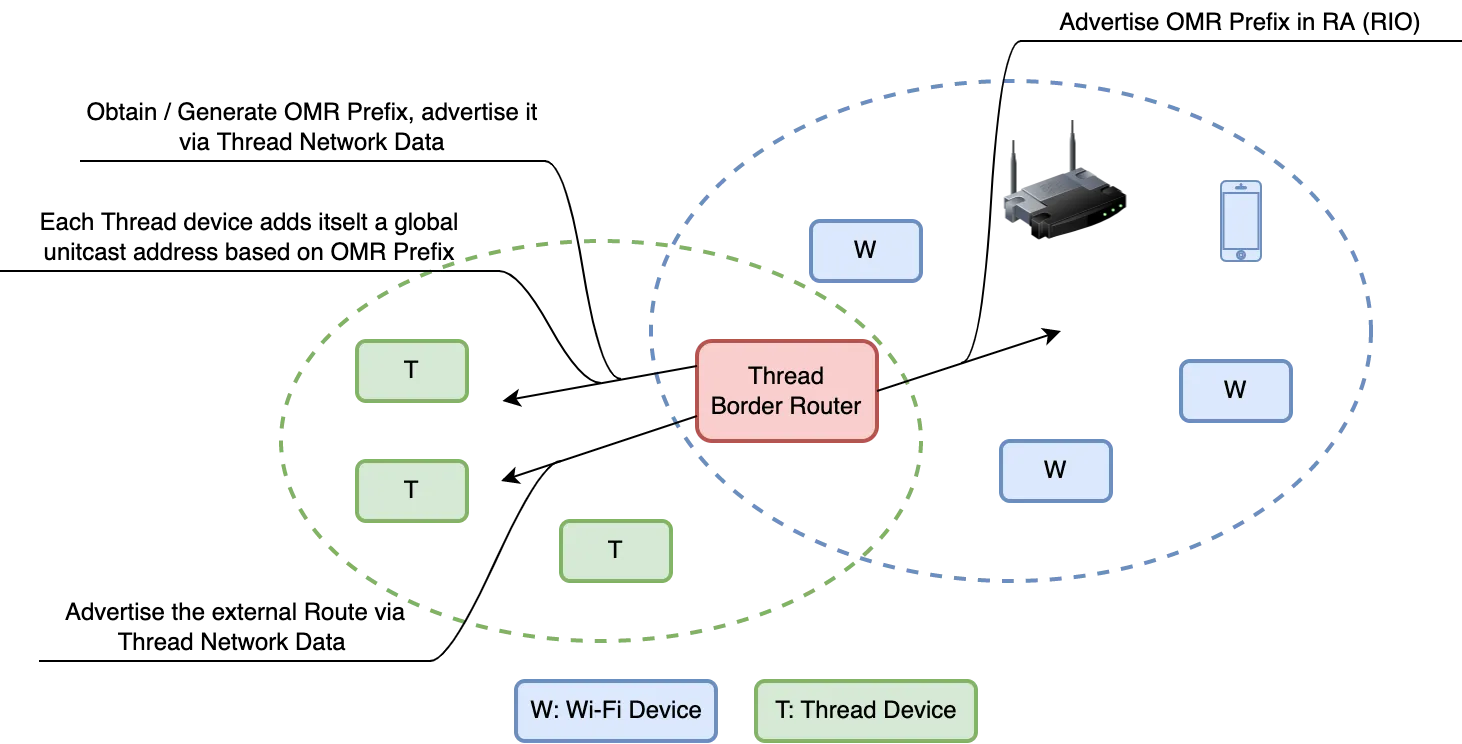
Then both devices in Thread and Wi-Fi networks know about the particular IPv6 prefixes reachable via the Thread BR.
Service Discovery
In Matter, the Standard DNS-Based Service Discovery (DNS-SD) is used for Service Advertising and Discovery. On Wi-Fi and Ethernet networks, the DNS-SD uses Multicast DNS for zero-configuration operation.
But multicast and broadcast are inefficient on wireless mesh networks like Thread. Service Registry Protocol (SRP) is introduced in Thread for service discovery over unicast packets.
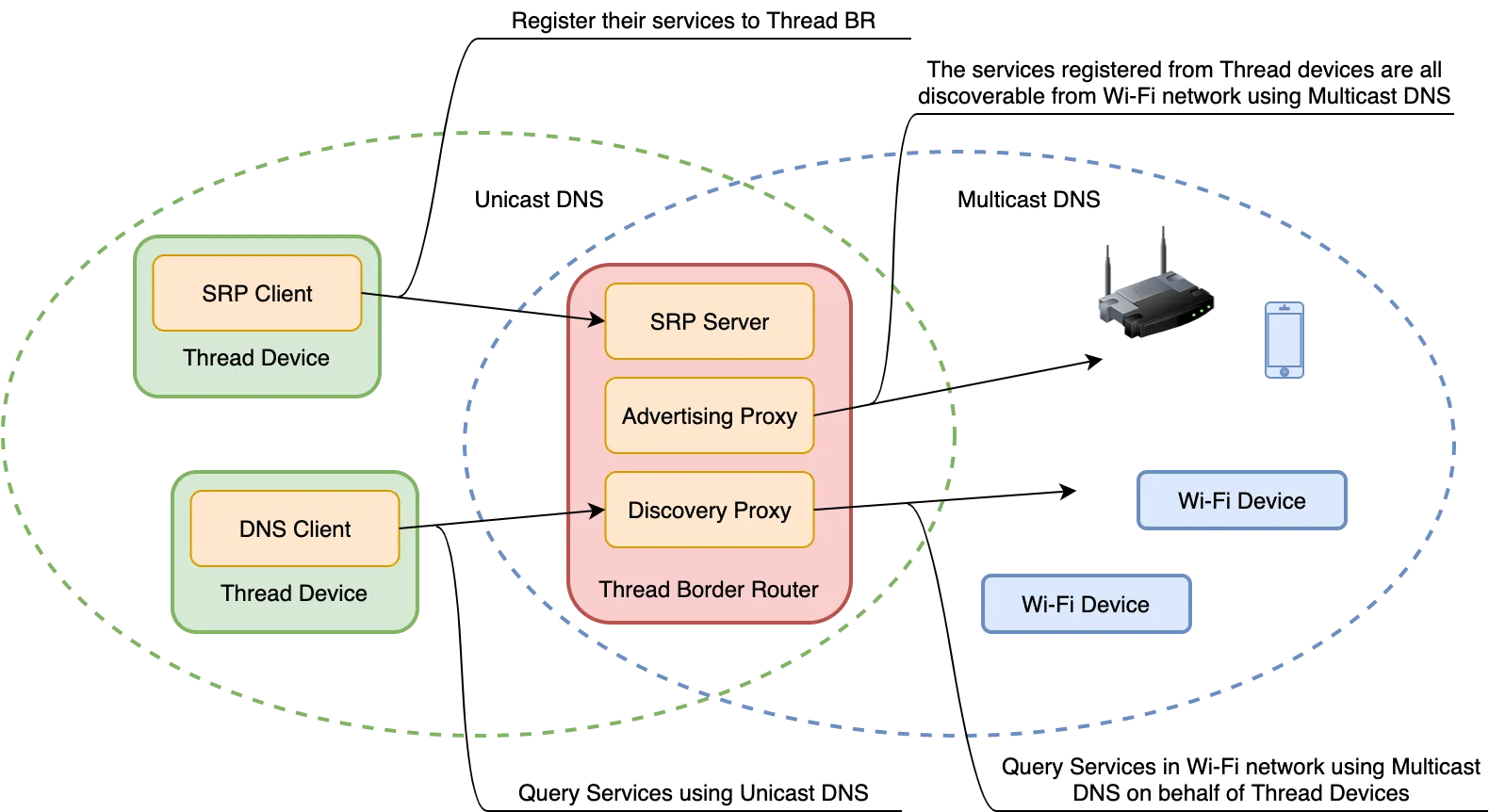
Normally, Thread BR acts as the SRP server and the Advertising Proxy: Thread devices register their services to Thread BR, and the BR will advertise all the services via Multicast DNS to Wi-Fi network.
The Thread Border Router also implements DNS-SD Discovery Proxy, to enable clients on the Thread network to discover services from Wi-Fi network.
Espressif Thread Border Router Solution
Espressif, as an active member that supports Matter from the beginning, we can offer the full spectrum of Matter protocol solutions for end-products with Wi-Fi or Thread connectivity, as well as for Thread Border Router and Bridge solutions using a combination of SoCs.
The Thread Border Router SDK is now available from the link: Thread Border Router Example and SDK. It uses two SoCs (Wi-Fi + 802.15.4) connected via a serial interface like UART or SPI.
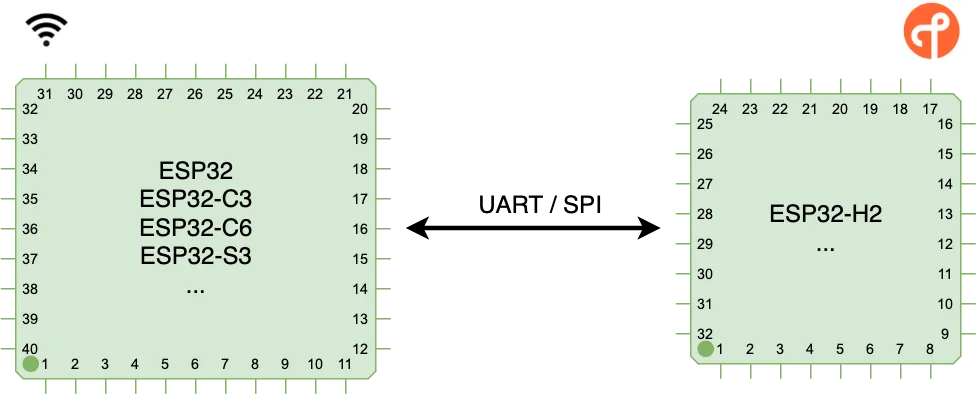
If you are interested in our Thread Border Router solution, please contact our customer support team.


